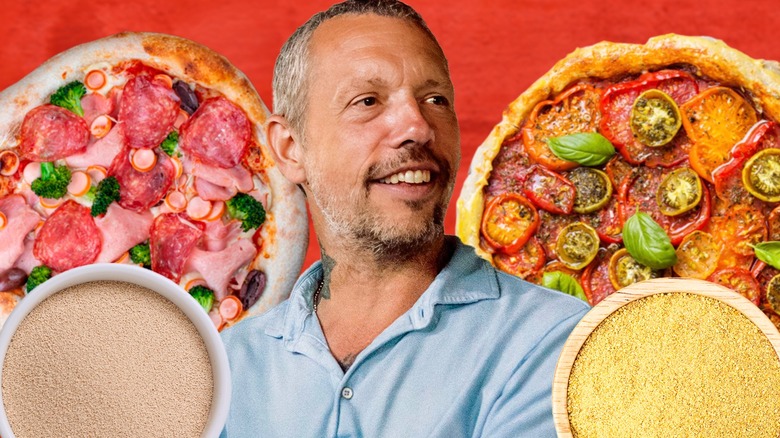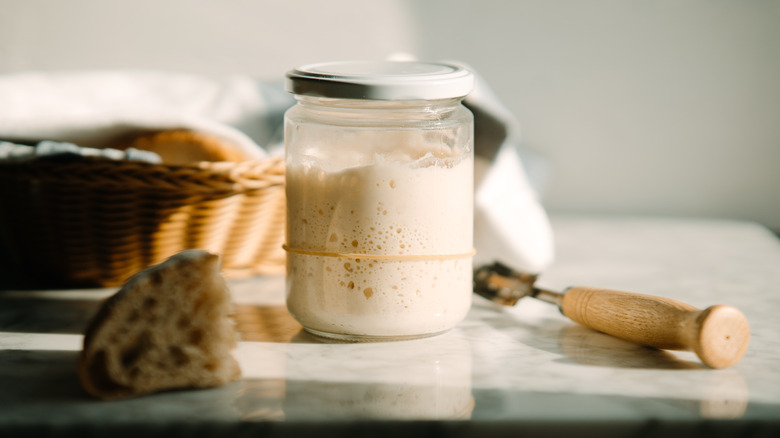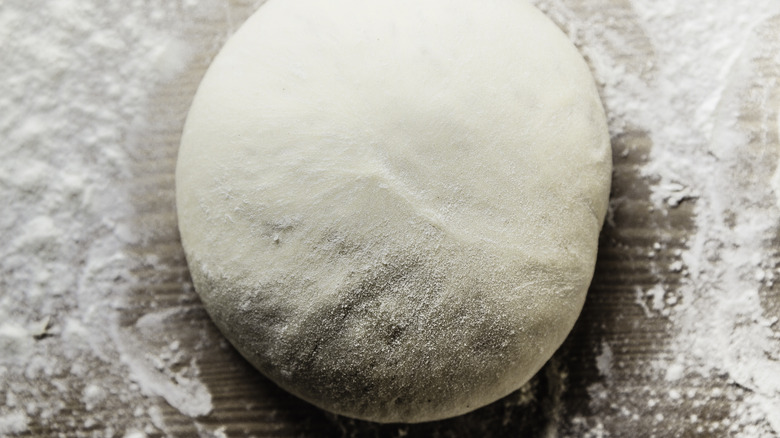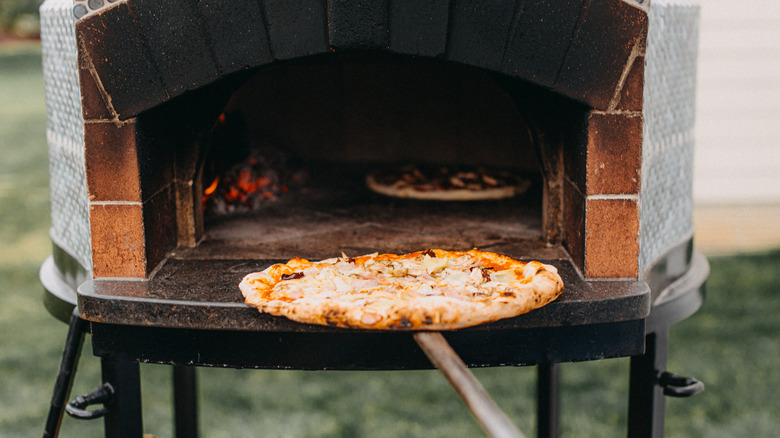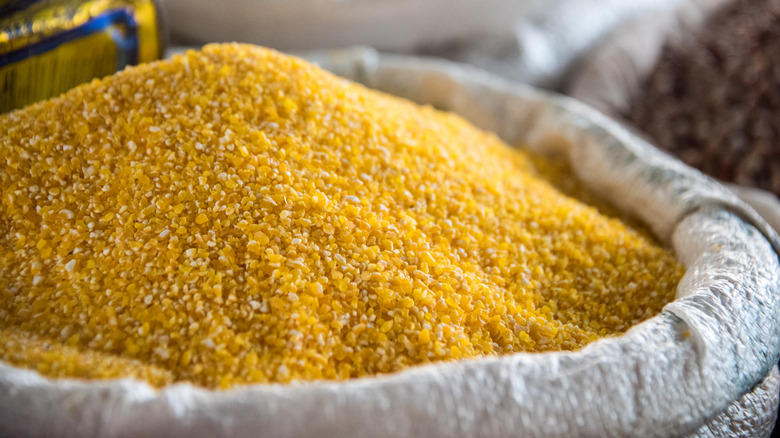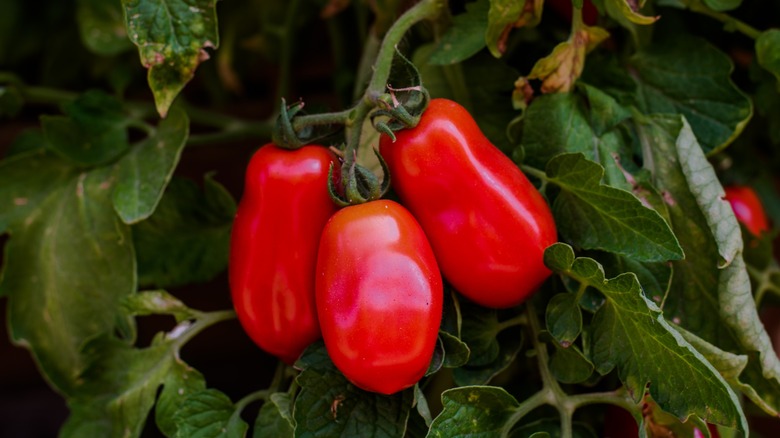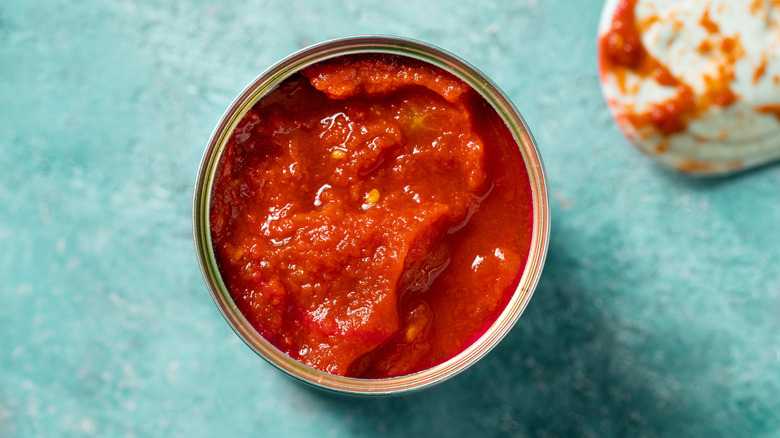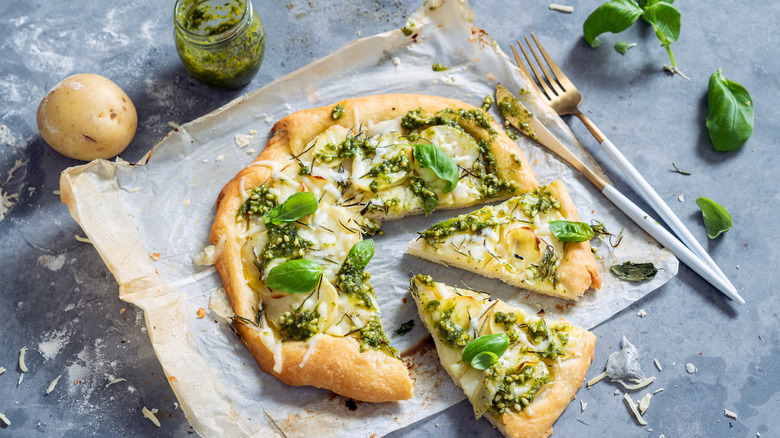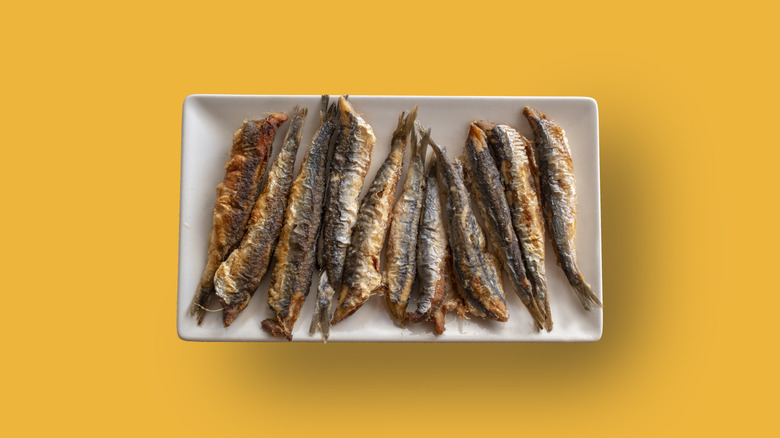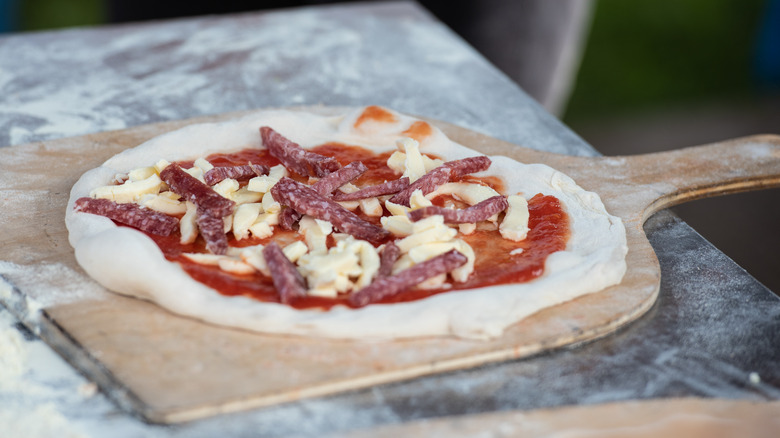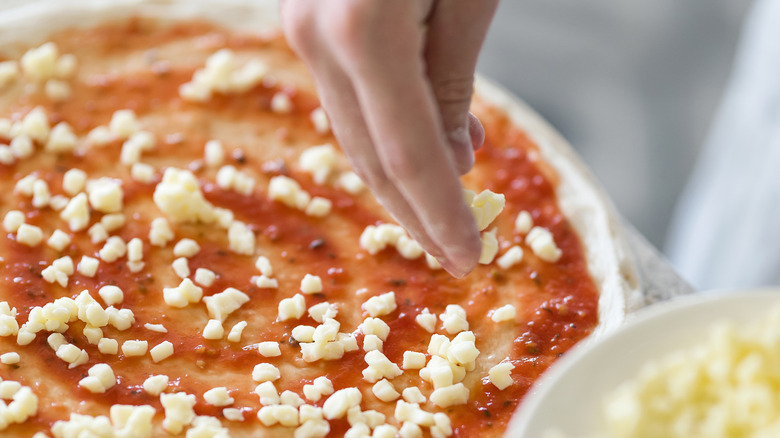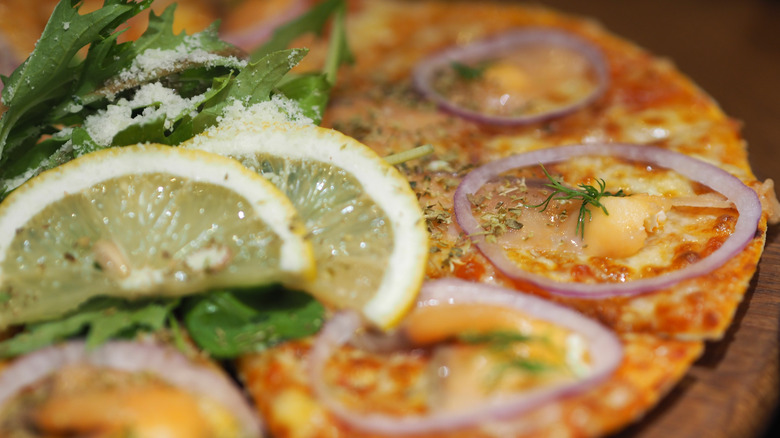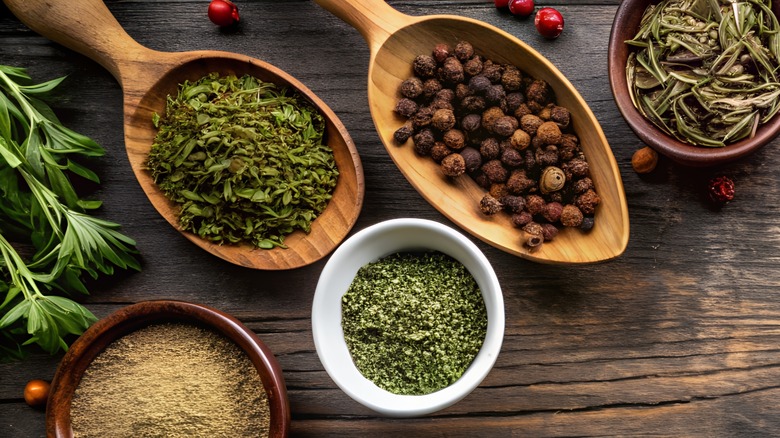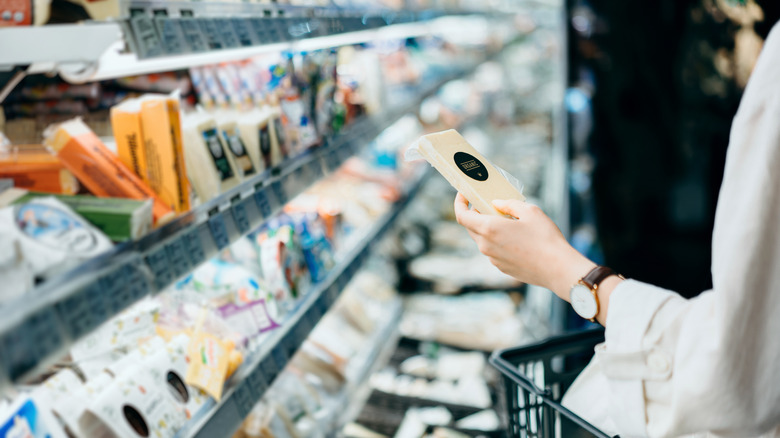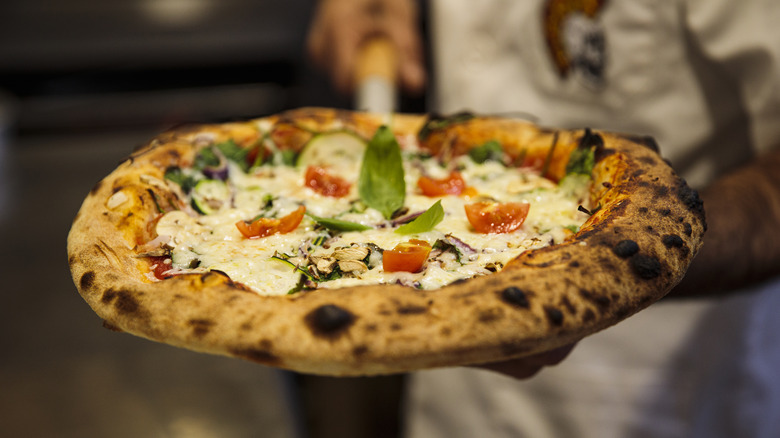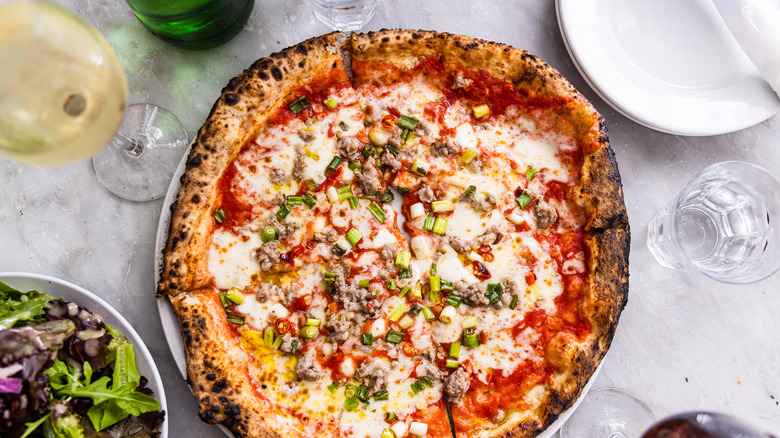The 15 Biggest Pizza Mistakes, According To Chef Anthony Mangieri
Everybody loves pizza, but few people love it as much as Anthony Mangieri. His beloved New York City pizzeria, Una Pizza Napoletana, just won Italian site 50 Top Pizza's much-coveted title of best pizza in the United States. Not for the first time, either: This is Mangieri's his third year in a row hitting the top spot in this global ranking. Aside from that, he's received rave reviews on various websites and publications from coast to coast.
There's good reason for this, of course. Mangieri is infatuated with pizza, and his passion took root at a young age; his mother would drive him to acclaimed pizza places throughout the New York metropolitan area. The interest didn't fade with youth, instead blossoming into a full-blown obsession Mangieri still nurtures — and now wins acclaim for — on the regular.
Today, Una Pizza Napoletana's commander-in-chief focuses on daily experimentation, natural leavening, and high-quality ingredients. Think the best San Marzano tomatoes, Amalfi wild oregano, buffalo mozzarella DOP, and Sicilian sea salt. Given this abundance of knowledge, Chowhound was excited to sit down with Mangieri and get the inside story on his famous pizza recipe, pizza-making tips and tricks, and the biggest mistakes home chefs make when it comes to this most American of Italian foods.
1. Using commercial yeast
First things first: Everything begins with crust. Your crust is the literal foundation of your pizza, and if you don't nail it, you risk compromising the whole enterprise. According to Mangieri, to get it right, you must avoid commercial yeast at all costs and use natural leavening instead. Goodbye, jarred yeasts: "Our dough at Una is only flour, water & salt," he explains. "Nothing else."
If you've ever made your own sourdough, then you're already familiar with the concept of natural leavening. If not, a leavening agent simply means an ingredient that makes dough rise. Eggs, baking soda, baking powder, and yeast from a packet or jar are all leaveners. Of these, only yeast can be curated naturally in your environment (with the exception of raising chickens, one supposes). All you have to do is mix flour and water in a 2-to-1 ratio and let sit at room temperature, discarding half the mixture and replacing it with a new 2-to-1 mixture of flour and water every 24 hours. During this time, wild yeast present on surfaces and in the air will settle on your mixture and metabolize it, changing it chemically. On about the fifth day, you should have a bubbly, slightly sour-smelling starter perfect for use in crust.
Sound hard? Don't worry. "Anyone can do this," Mangieri says. "It takes time and patience to build a strong starter dough, and the more you use it the better you'll understand how to use it for pizza or bread."
2. Not using enough water
The next mistake most chefs make with pizza crust is using too little water. Believe it or not, water is not an enemy of good pizza dough. Indeed, when you're reheating leftover pizza, water is the secret hack that will ensure gooey cheese while bringing your crust back to life. All you have to do is put a small pan of it in the oven along with your pizza stone while reheating, and it will liven up your leftovers until they taste almost like new. However, the importance of good old H20 starts much sooner than that.
According to Mangieri, you should always make your dough with a lot of water. Don't be afraid of adding too much, he says, and don't respond to stickiness by dousing dough in gobs of flour. This reduces the dough's hydration, which can lead to a dense and dry result. When handling, embrace the stickiness instead ... that moisture is what will lead to great crust with a nice, light crunch. If you really need to, you can add a little oil to prevent sticking, but try to learn to live without.
3. Cooking too quickly
When trying to conquer great pizza, the first thing most chefs learned (this writer included) was that pizza should be cooked hot and quick. Out with your standard baking temperatures and in with higher-than-high heat! Folks are routinely told to crank up the oven as high as it will go, blast the pie for a short period, and enjoy the Sahara-like results on their dough.
However, Mangieri says, this advice is wrong. Cooking your pizza too quickly leads to uneven results and un-crispy crust. Instead, he advises people to bake it slower than normal, making sure to use lots of water in your dough. The lower heat will ensure even cooking. For thin crust, you'll want to set the oven higher and cook for a shorter amount of time than for a thick crust, which calls for lower heat and longer baking. Check your recipe to be sure, and experiment to find out what works for your oven, since too low a temperature can result in soggy pizza dough.
Also, make sure not to overcrowd the oven, Mangieri says. At Una Pizza Napoletana, only three pies are carefully placed to baked in the wood-fired oven at one time. This ensures even cooking and delicious results. Even if you don't have a wood-fired oven, you should still use this no-crowding mindset in the kitchen.
4. Adding cornmeal to the bottom of your pie
Chowhound was curious about Mangieri's take on cornmeal as well. From family fun centers to ostensibly authentic Italian dining, you'll find coarsely ground cornmeal on the bottom of many a pie. What's the deal?
The short answer is that cornmeal helps the pizza not stick when being transferred to the oven. It's got nothing to do with the taste and certainly isn't a traditional Italian addition. When asked for the yea or nay on cornmeal, Mangieri's response was a resounding "Nay. It adds too much of another flavor to your pizza." Avoid it, instead dusting with a little bit of flour if necessary. Semolina is a traditional Italian ingredient, and you don't need much to ensure an easy slide into the oven, especially if you're using a pizza peel. (You know, the paddle-looking transfer thingie.) A dough scraper also helps, and Mangieri uses one in his practice.
Watch out for cornmeal in the real world too. This could be a pizza shop red flag, so you might want to look elsewhere for your next slice.
5. Selecting the wrong tomatoes
Tomatoes are oh-so-crucial when it comes to pizza, and using the wrong ones is a mistake made by many a home chef. Mangieri advises cooks to "Keep it simple & use the very best fresh (when in season) or canned tomatoes."
How do you find good tomatoes in season? The farmers market is a great place to start. If you see them there, you can guarantee they're fresh off the vine. Typically, fruits and veggies at the farmers market are harvested at peak ripeness and were probably picked within the last day or so. Ideally, look for tomatoes that are meaty with few seeds, such as Roma or other paste varieties. They can be good at the grocery store as well, but look for ones that are local and likely to have been picked recently when fully ripe. If you can't find good tomatoes in season, then opt for canned ones. San Marzano are the best bet, says Mangieri.
6. Overcomplicating your sauce
Remember, it's tomato sauce, so it should be all about the tomatoes. Many people make the mistake of overcomplicating the sauce, Mangieri says, thereby unintentionally disguising the fresh and delicious flavor of well-ripened tomatoes. That leads to competing flavors, and, ironically, reduces the complexity and nuance of the finished product.
To make sauce at Una Pizza Napoletana, Mangieri drains San Marzanos from a can, cuts the ends off, and squishes them with his hands. Growing near Mount Vesuvius and benefiting from the volcanic minerals in the soil, these tomatoes are slightly acidic and not as sweet as other varieties. They make for a perfect sauce all on their own; there's no need to add anything else.
If you really want to make a sauce with other ingredients, choose a simple recipe. You shouldn't need more than a bit of salt, garlic, and oil, along with a pinch of oregano, if desired.
7. Forgetting about other sauces
But hey, what's life without a little variety? Other sauces exist as well, and Mangieri by no means advises limiting oneself to tomatoes alone. Asked for another option, he says, "Pesto is really fun. And you can top with mozzarella and finish with good ricotta."
Plus, pesto is dead easy. All you have to do is combine pine nuts (or walnuts, if pine nuts are too expensive), lemon, garlic, salt, pepper, basil, olive oil, and Parmesan cheese in a food processor and run it until you achieve a smooth sauce. It comes out the perfect consistency for spreading on pizza dough and topping with cheese, meat, and veggies. Just make sure to follow your recipe's ratios when making the sauce. They matter.
Other cooks advise all kinds of other sauces with which to experiment as well. You can use white sauce, glaze, or a thin smear of tomato paste to lend that tomato flavor without loading up the crust.
8. Opting for cheap toppings
So, what are the biggest mistakes vis-à-vis toppings? Honestly, the advice is pretty simple: "Cheap toppings don't taste great," Mangieri explains. "Use the best and freshest you can find and make sure when combining toppings that it makes sense."
We've all been guilty of buying the cheap mozzarella when the budget gets tight, or of wanting to prioritize quantity over quality. But while it's tempting to ball outrageous through the jarred good aisle and the cured meat department, getting absolutely everything that's on sale, it's better to limit yourself to just a few nice ingredients. At this point, you won't be surprised that Mangieri's advice is to "keep it light."
That's not to say you can't find nice toppings for a great price. Ethnic food stores and Grocery Outlet, for instance, are both places where you can find lovely imported foods for a fraction of the cost at your neighborhood grocery store.
9. Going overboard when topping
Speaking as someone who loved to buy frozen Totino's pizza in her youth, then go home and add way too many toppings and call it fine dining, you can trust Mangieri's next piece of advice: Limit your toppings. Just as too many cooks can spoil the soup, too many toppings can unbalance the delicate flavor combinations that make good pizza really good. So while it's tempting to employ every budget-friendly frozen pizza hack you can find, use a light hand.
Choose subtle flavor combinations of only three or four ingredients. At Una Pizza Napoletana, you'll find that most pies are limited to sauce, cheese, sea salt, and garlic or herbs. Try it on for size ... you might like elegantly spare pizzas more than you think.
Oh, and as for Totino's? You'll be delighted to know that Mangieri just launched Genio Della Pizza. It took 3 years to create the perfect high-quality frozen pizza, but you can now try Anthony's craft firsthand with his artisan frozen pizza line, available through Whole Foods, GoPuff, Goldbelly, Sprouts, and more.
10. Adding toppings at the wrong time
Many home cooks assume you should add pizza toppings in the beginning, before you pop your pizza in the oven. However, Mangieri says, you should let the ingredient guide you. "It really depends on the topping. Some before, some after," he says. "For example, fresh cheeses or delicate fresh herbs are best after baking. When using raw veggies I like to slice them super thin and put them on before baking."
There are some firm rules, though. For instance, you should always precook meat, which might not get enough heat in the oven to cook safely. The same goes for precooking mushrooms as pizza toppings. These, although safe in a raw state, can release too much water into your pizza if they are not precooked. Make sure to put cheese at the bottom, which not only protects the crust with a layer of fat, it also prevents the cheese from forming a layer over other ingredients that might prevent thorough cooking.
11. Forgetting about lemon
One mistake many home bakers make, according to Mangieri? Not using lemon on pizza. Although this might seem like an odd ingredient, it is actually quite popular across the interwebz. If you're looking for a new spin on an old Friday night treat, this could be the ticket to impress friends, family, and neighbors.
Lemon and cheese have always paired well together, as do lemon and bread, so it's really no surprise that they make a dynamic duo in pizza. On the Amalfi coast, lemon makes its appearance both within the crust, baked right into the dough, as well as strewn across the top in the form of zest. Other pizzas use very thin lemon slices scattered between also-thin slices of Italian cheese, such as piave and fontina. Parmesan and mozzarella are also popular paired with lemon.
How you sauce your pizza will depend on the recipe you're using. However, note that many pizzas employing the lemon approach skip tomato sauce and use basic extra virgin olive oil for the base, or omit it entirely and drizzle the oil over the top.
12. Overspicing and undersalting
The reason everyone loves Mangieri's pizza is because it is perfectly understated. The emphasis on perfect ingredients over elaborate creations is what has earned it the love of critics everywhere, as well as its impressive trophy case. It is hardly surprising, therefore, that one of Mangieri's biggest complaints is when food is over-spiced.
"But that seems to be the case in most forms of cooking lately," he laments. "That being said, don't be afraid of salt. It brings out the flavors of all the other ingredients. Since Una started I've been using coarse sea salt on the pizzas for little pops of salt here and there."
If you do find you've over-seasoned something, he adds, you can always add a little olive oil to neutralize it and bring out the other flavors. Other times, you just have to shrug and walk away. Who knew making pizza could be such a good acceptance practice?
13. Using vegan cheese
Vegan cheese is a hot topic these days. Non-dairy cheese substitutes are indeed getting better and some advocate strongly for their increases in creaminess and meltability, but Mangieri would still prefer to keep them far away from his dining room.
"I don't use it," he says. "I would prefer a tomato pizza like marinara and just skip the cheese if cheese is an issue." He does put his money where his mouth is, though: Una Pizza Napoletana offers a cheese-less marinara pizza that puts the focus on crust, sauce, and herbs, ideal for the vegans among us. (Note that there's a difference between marinara and margherita pizza. Though they sound quite similar, one means without cheese, the other is with fresh mozzarella.)
This is where the importance of crust comes in. If you've mastered your recipe and have gotten over your fear of water, you can top it with something as simple as cherry tomatoes and a light sprinkling of chili flakes.
14. Expecting perfection every time
Perfection is the enemy of progress, as Winston Churchill once said. It is tempting to give up when something doesn't go our way, but that's a mistake, according to the obsessively experimental Mangieri. He is still trying out new variations and tweaks to this day, nearly four decades after making his first naturally leavened dough after discovering the deliciousness of Neapolitan pizza firsthand.
"I am still working on it after 37 years," he says, adding, "Your pizza may not look pretty or be a perfect circle. That's totally okay; sometimes ugly is delicious." Black bubbles in the crust are normal, cheese doesn't always spread evenly, sometimes you forget to set the timer. But the beauty of pizza is in the trying. The most joy, for him, comes when "for a brief moment I feel like it's all coming together and working the way I hoped. The dough, the oven, the toppings, the dining room." Don't get used to that feeling, though. "It can truly feel like magic, but it's fleeting."
That's not to say attention to detail doesn't matter, though. Laser focus is the reason Mangieri only has one location today. Since opening, Anthony has made each and every pizza dough himself, and the restaurant does not open for service unless he is able to be there. That kind of dedication can only stem from his secret tip: "You have to feel love and gratitude or your food won't taste as good."
15. Not making the effort with food and wine pairings
The last mistake many people make is focusing only on the pizza. However, rarely do we eat pizza on its own. Whether serving personal pies or making them family-sized, they usually come with salads, wines, and desserts. It's worth putting in the time to ensure a fully finished presentation before serving guests.
To the question of what pairs well with pizza, Mangieri has several answers. "A beautiful seasonal salad or some type of vegetable, possibly cooked in the same type of way as your pizza," he says. "For beverages, try sparkling water, L'ippa Beer by Baladin, Gragnano wine from the Campania region of Italy, Champagne, and wines from the Burgundy region of France."
The good news is that a quick Google search will net you lucrative results when it comes to pairings. For instance, Prosecco pairs well with supreme pizzas, while pinot noir is a good option for plain cheese. Try sangiovese for pepperoni, and chardonnay for veggie lovers.
